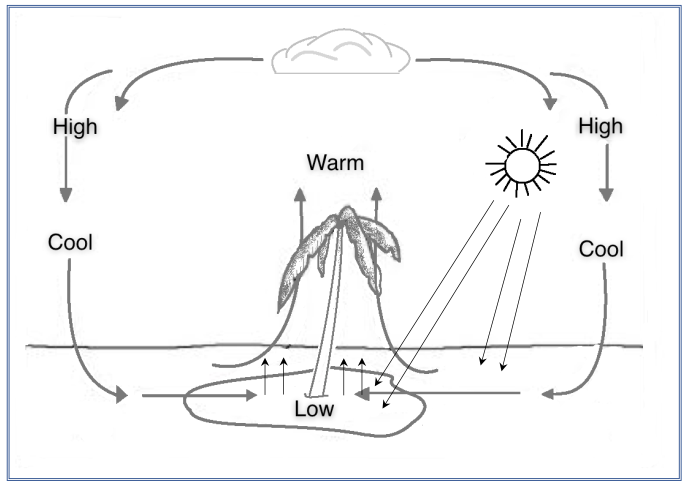Weather is based on the relationship of the Sun to the Earth.
Warm air rises, cool air sinks, the Earth rotates beneath it, and revolves around the sun.
As simple as it sounds, this sums up the processes driving the weather patterns we experience. We are going to start our weather education looking at a drawing of a large scale process which has been scaled down to size.
In our drawing, rays from the sun pass through the atmosphere to heat the surface of the earth. Land warms more quickly than water.
Warm Air Rises
The warmed land then radiates its heat, warming the air near it. The warm air rises.

As the warm air rises, it begins to cool back down, and to move away from more new air rising. The cooling continues until eventually the air begins to sink back to the surface where it heads toward the area of rising air, filling in for the air that’s no longer there.
Some important facts
A great deal of information is found in this simple image. Some of it is obvious, and some not.
- The sun heats everything, however, land heats faster than water.
- Warm air rises. In this case, the “packet” of air directly above the island moves upward.
- Warm air is able to hold more moisture than cooler air.
- Wind is the movement of air from one place to another.
- As the packet of warm air rises, it begins to cool back down.
- When the packet of air cools to a certain point (called the dew point) it condenses into clouds.
- At some point, the cooling air begins to move away from the newly arriving warmer air.
- The cooled air begin to sinks, replacing the cool air moving toward the island.
- The rising warmer air over the land creates an area of lower pressure (less air).
- The sinking cool air creates an area of high pressure (more air).
Consequently, it’s clear from this small-scale model that the sun is the driving force behind the movement of air around the island.
But, how about on a larger, global scale. Is the sun still important? Yes, it is! Enter the Hadley Cell.
